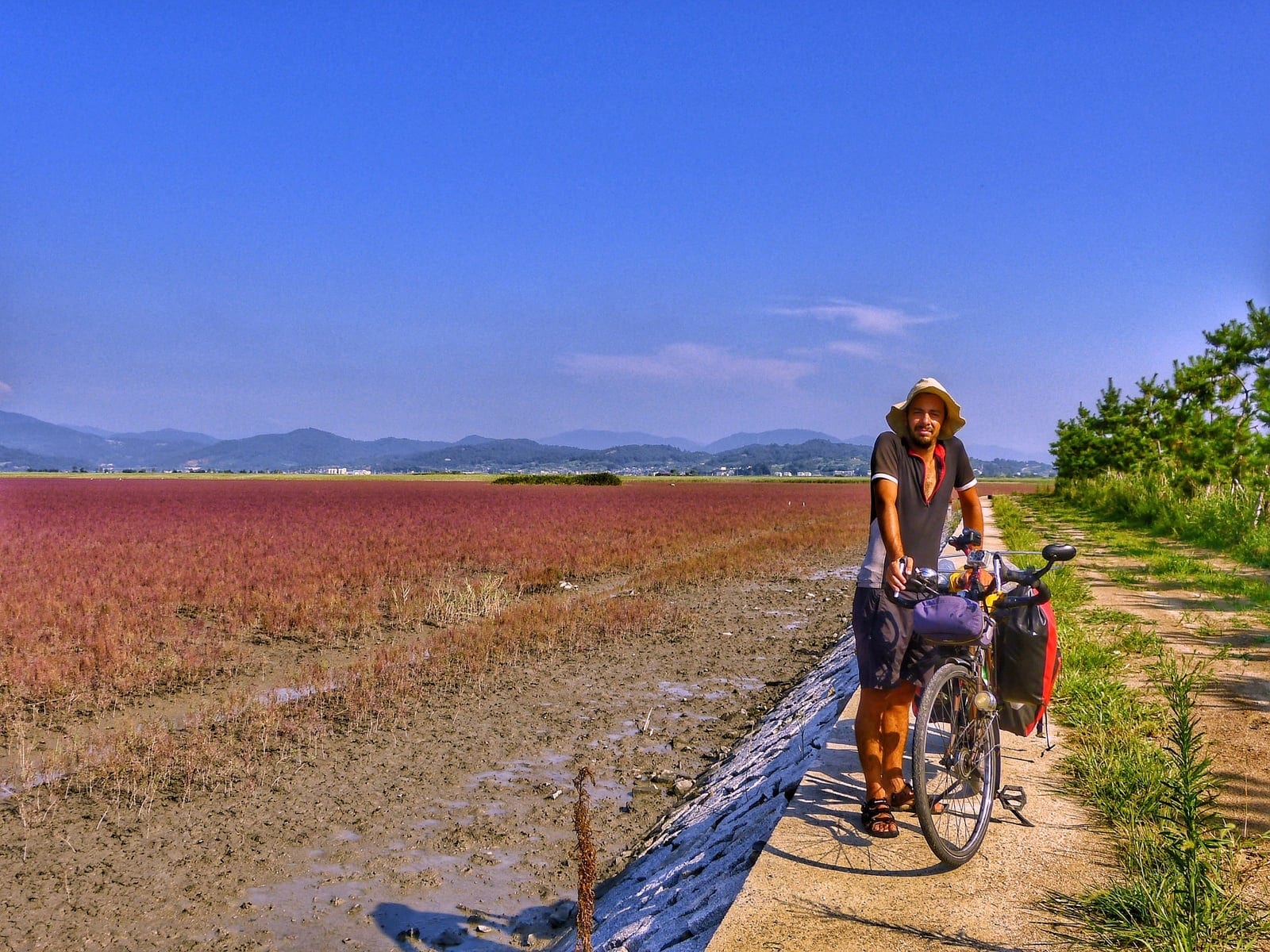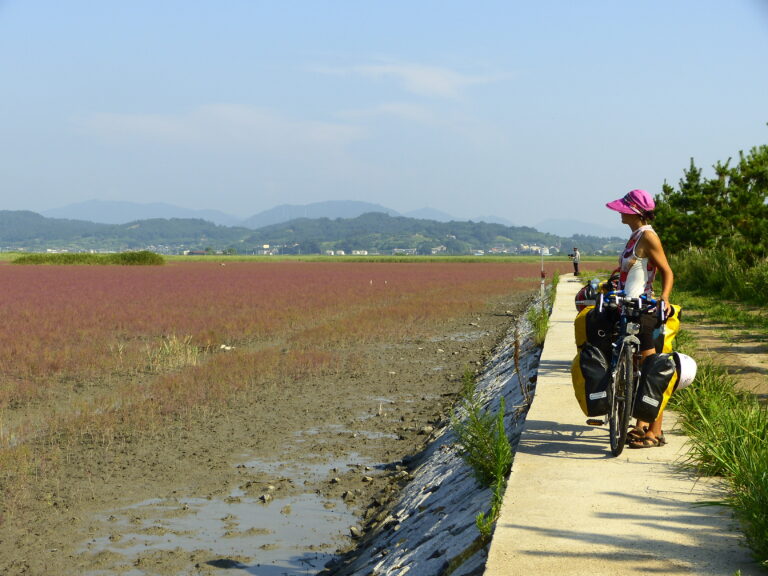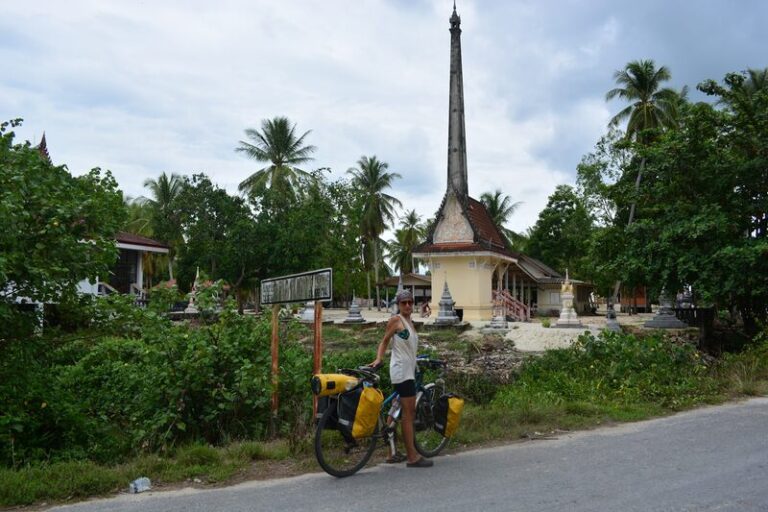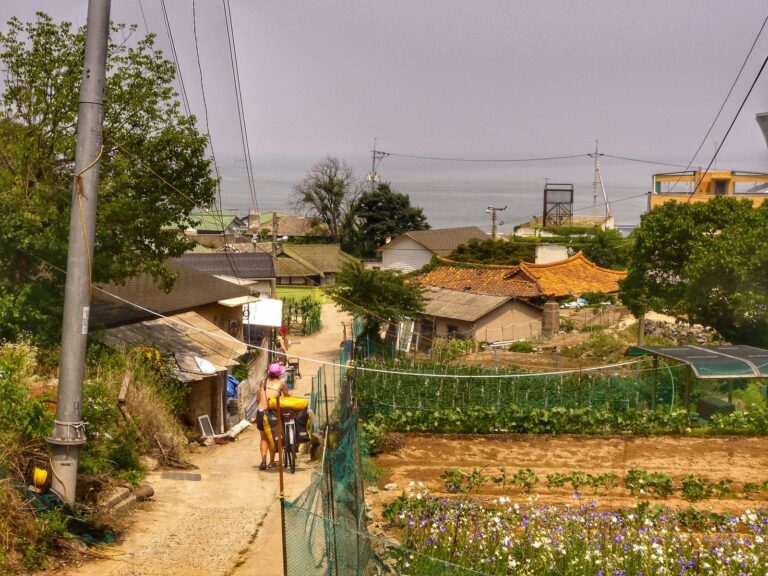Cycling in South Korea – roads, weather, camping, food, tips, advice
Cycling in South Korea is an exhilarating experience suitable for everyone, from seasoned bike tourers to those who typically use a bike for short commutes.
This guide covers everything you need to know about cycling in South Korea, including road conditions, weather, camping, food, and essential tips, along with a detailed itinerary for exploring the Korean Peninsula by bike.
Korea is such an easy destination that it made it into our short list of:
> 9 Easy Destinations for Bike Touring Beginners
More info:
> BLOG: Bicycle Touring The Paths Of Korea
> ROUTE: Bikepacking South Korea – GPX Itinerary
We’ll give you a full breakdown of each section further down in the article, but for those in a rush, here’s a quick overview.
Cycling South Korea In A Nutshell
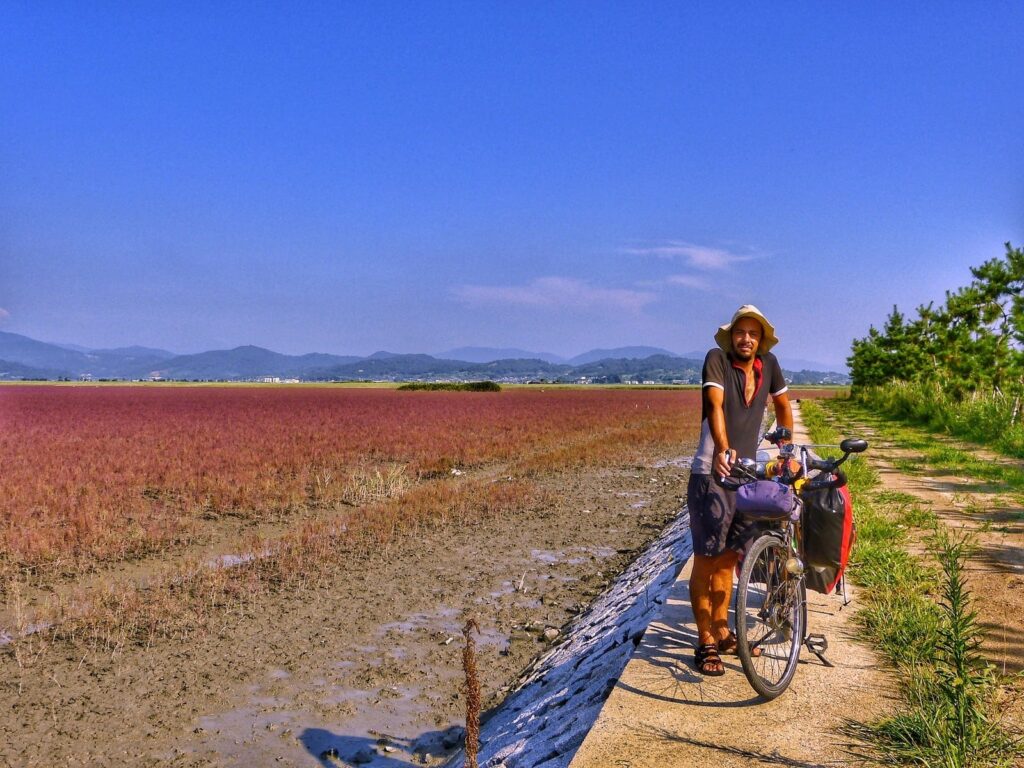
Why Cycle in South Korea?
South Korea is an ideal destination for a bike trip due to several key factors:
- Visa-Friendly: Most nationalities receive a free 90-day visa.
- Safety: South Korea is one of the safest countries in the world.
- Camping: The country is extremely camping-friendly.
- Infrastructure: There is an extensive network of bike paths and quiet secondary roads.
Scenic Highlights
Cycling through South Korea offers diverse landscapes:
- Coastlines and Beaches: Stunning coastal views and beautiful beaches.
- Islands: Thousands of islands waiting to be explored.
- Lakes: Numerous picturesque lakes.
- Lush Interior: Green, hilly landscapes that provide a refreshing backdrop.
Budget Considerations
While South Korea is not as inexpensive as some other Asian countries, it is still possible to cycle on a tight budget. During our trip, we managed on less than $10 per day each, thanks to:
- Free Campsites: Numerous free camping spots across the country.
- Convenience Stores: Ubiquitous and handy for budget-friendly meals.
Essential Information for Cyclists
- Road Conditions: South Korea boasts well-maintained roads, both on major highways and secondary roads.
- Weather: The country experiences four distinct seasons, with spring (April to June) and autumn (September to November) being the best times for cycling.
Camping
- Free Campsites: These are widely available and often located in scenic areas such as beaches and lakesides.
- Camping Culture: Camping is popular among locals, making it easy to find suitable spots.
Food
- Convenience Stores: Great for budget-friendly snacks and meals.
- Local Cuisine: Don’t miss out on trying local dishes like bibimbap, kimchi, and bulgogi whenever your budget allows.
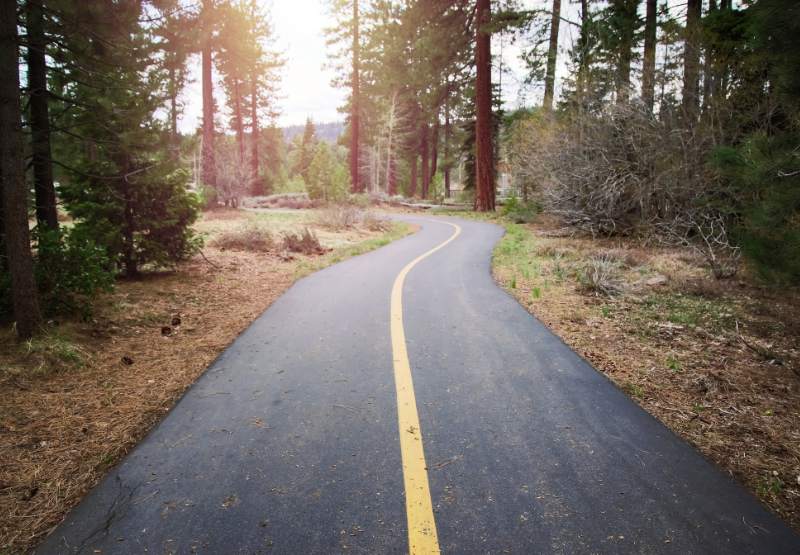
The 4 Rivers Bike Path and Why I Don’t Recommend It
When researching cycling in Korea, you’ll often find a lot of information about the famous 4 Rivers Cycling Path.
This dedicated bicycle path spans 633 km, connecting the major cities of Seoul and Busan. It traverses the interior of the country along the Hangang, Nakdonggang, Geumgang, and Yeongsangang rivers.
The Four Rivers Path has gained popularity in recent years, significantly boosting bicycle tourism in South Korea.
While this is a positive development, should you rely solely on this path when exploring Korea by bicycle?
My answer is a firm NO, and here’s why:
- Limited Coastal Experience: The path only touches the coastline in Seoul and Busan. The Korean coast is stunning and one of the most interesting aspects of the country—why miss out on it?
- Missing Island Culture: The path bypasses the thousands of Korean islands. These islands are where you can experience the most authentic Korean culture. Why skip them?
- Lack of Exploration: The path is a single, long, signposted route. Are you sure you don’t want to chart your own course through the country and discover more?
The 4 Rivers is certainly a pleasant and easy cycling trip, but I believe there’s much more to see in South Korea. That’s why I recommend a completely different itinerary (ours) but also encourage you to just take some inspiration—or even completely ignore it—and create your own adventure through this beautiful country.
Best Time to Cycle South Korea
The Korean peninsula is located at a northern latitude, similar to Siberia. However, the proximity to the sea mitigates the temperatures, so it rarely gets as cold as Russia.
- Winter: Very cold, especially in the north. The southern coast is more bearable, but expect snow everywhere in January and February.
- Summer: Very hot and sweaty, especially in July and August, although nights are usually cool enough for comfortable sleeping. It is also the monsoon season, which means frequent but mostly manageable rain.
- Optimal Seasons: Late spring (May/June) and early autumn (September) are the best times to cycle due to moderate temperatures and pleasant weather.
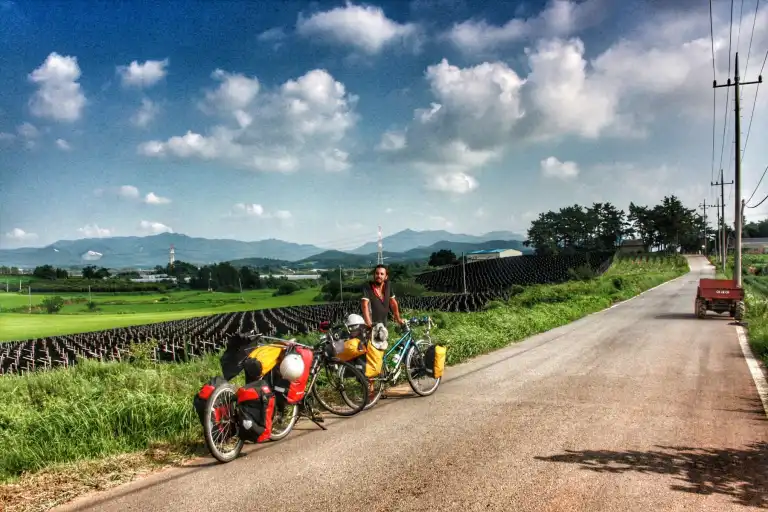
Roads in South Korea
- Bike Paths: South Korea boasts numerous long-distance bike paths. While these are convenient, they can be monotonous and lack a sense of adventure.
- Road Network: The country has a well-maintained road network with many alternative routes. These lesser-known roads offer a chance to see the real South Korea and are often quiet and scenic.
- Terrain: South Korea features constant rolling hills, which can be challenging but rewarding. The only major mountains are in the north.
Getting to South Korea by Ferry
- Ports: Most travelers fly into Incheon Airport, but there are ferry options from China, Russia, and Japan.
- Ferry Routes:
- China: Several cities, including Qingdao to Incheon.
- Russia: Vladivostok to Incheon.
- Japan: Busan to Fukuoka, with fares as low as €40.
- Overland Travel: Virtually impossible due to North Korea. Crossing North Korea is theoretically possible with a costly military escort, but not advisable.
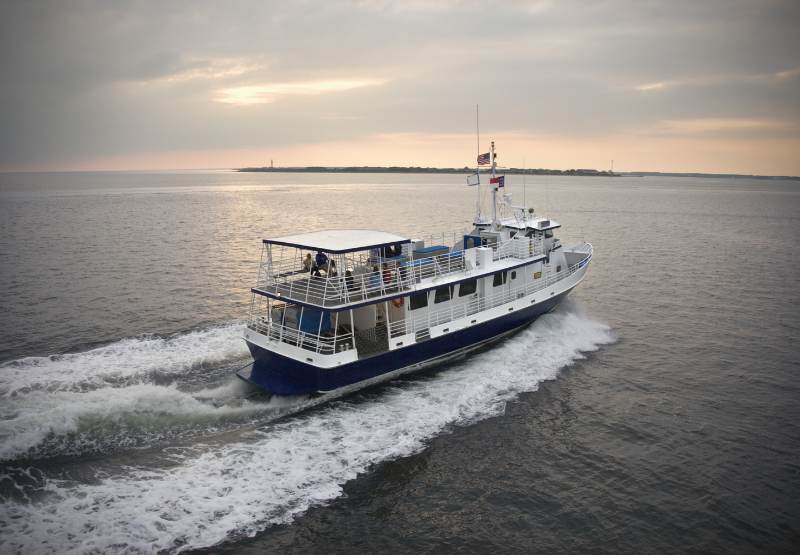
Taking Public Transport with a Bike in South Korea
- Buses: Plentiful and economical. Bicycles can be stored in the trunk for free. Average fare is ₩35,000 to cross the country.
- Trains: A modern train connects Incheon Airport to the start of the cross-country bike path and continues to Seoul. Fare is ₩8,000, and bikes travel free and fully assembled.
- Ferries: Connect many islands not served by bridges. While routes can be confusing and English may be limited, exploring the islands is highly recommended. Small fees apply for bicycles, which can be taken aboard fully assembled.
Where to Sleep in South Korea
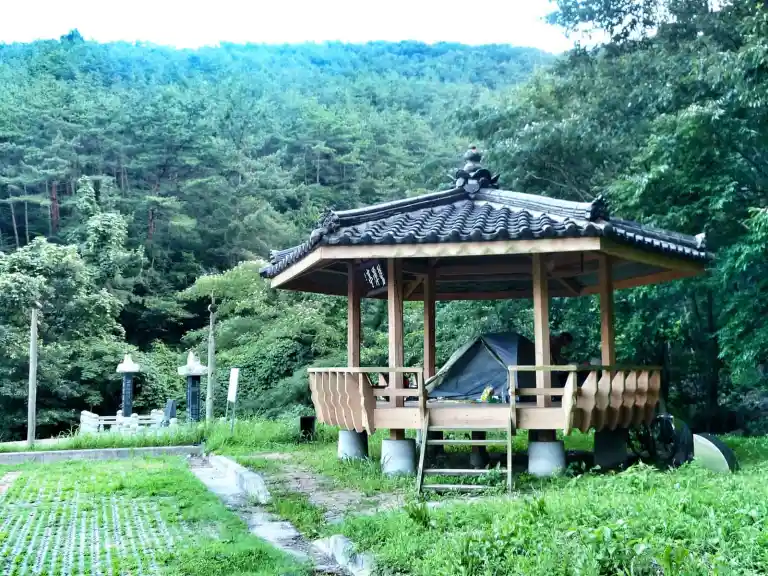
Free Camping
- Camping Culture: South Korea is extremely camping-friendly, with many free camping structures equipped with toilets, showers, and shaded tent spots.
- Gazebos: Wooden gazebos are common and can serve as excellent shelters for camping, even in urban areas like Seoul.
- Local Hospitality: Friendly locals may offer coffee or assistance, making camping a way to experience Korean kindness firsthand.
Staying with Locals
- Invitations: It is uncommon to be invited to stay at someone’s house, but meals and small acts of kindness are frequent.
- Warmshowers and Couchsurfing: Widespread but often hindered by language barriers.
- Volunteering: Opportunities through platforms like Workaway offer immersive experiences in Korean culture.
Paid Accommodation
- Cities: Rooms for less than $30 and hostel beds for as low as $9 are available in major cities and tourist areas.
- Countryside: More expensive, with rooms typically starting at $40 per night.
- Jimjilbangs: Public baths offering overnight stays for about $5, including access to hot baths.
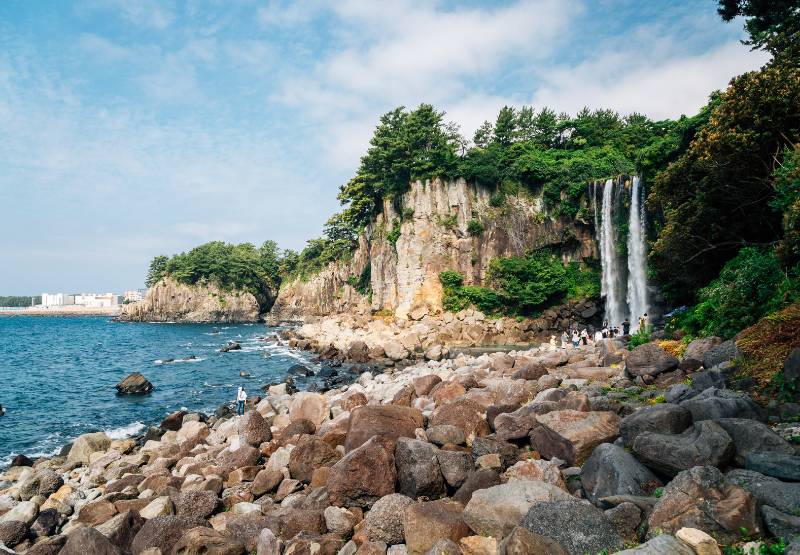
Getting Water in South Korea
- Tap Water: Safe and widely available.
- Gas Stations: Often equipped with toilets and sometimes showers.
- Public Baths: Common but not always easy to identify. The term 찜질방 (jjimjilbang) is useful to memorize.
- Irrigation Channels: Can be used for quick washes in rural areas, though not always considered polite.
Where to Eat While Cycling in Korea
- Korean Cuisine: Diverse and spicy, with each region offering unique specialties.
- Restaurants: Meals in cheap restaurants range from $10 to $15, with cheaper options available in big cities.
- Side Dishes: Many restaurants offer unlimited refills of side dishes with meals.
- Convenience Stores: Numerous and provide pre-cooked meals for around €3. Quality varies.
- Supermarkets: Limited ready-made meals but offer canned and frozen foods. Fresh produce is expensive.
- Local Hospitality: Befriending locals can lead to invitations for home-cooked meals, offering an authentic culinary experience.
`

